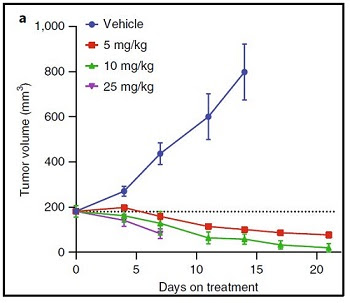|
Molina, J. R., et al. An inhibitor of oxidative phosphorylation exploits cancer vulnerability. Nat Med. 2018. 24 (7): 1036-1046.
One of the shifting paradigms in cancer metabolic research is moving away from the conventional view that all cancer cells ARE glycolytic (Warburg), towards the realization that metabolic phenotype in cancer cells actually widely varies, with many cancer cells relying heavily on OXPHOS. This opens up a new avenue for targeting OXPHOS in the discovery of oncology drugs, and a new area of opportunity for cell metabolic measurements. The selected publication of the month reports on the discovery of a IACS-010759, a clinical-grade small inhibitor of complex I of the mitochondrial electron transport chain. Results showed that, in brain cancer models and acute myeloid leukemia cells reliant on OXPHOS, treatment with mitochondrial inhibitor IACS-010759 impeded proliferation and induced apoptosis.
This research demonstrates novel applications of Agilent Cell Analysis for targeting OXPHOS metabolism as a promising therapeutic approach in some cancers and highlights an opportunity to challenge the conventional paradigm that the Warburg effect is all there is to know about cancer metabolism. This phenomenon is consistent with other recent publications, our own R&D results (ATP/AACR poster), and in the recent webinar by Victor Darley-Usmar demonstrating variance in metabolic phenotype of cancer cells. Lastly, one of the coauthors on this publication is our very own Pietro Morlacchi, LC/MS Application Scientist with Agilent at the Lexington site, demonstrating the value in cross-functional solutions for delivering complementary research applications.
|

